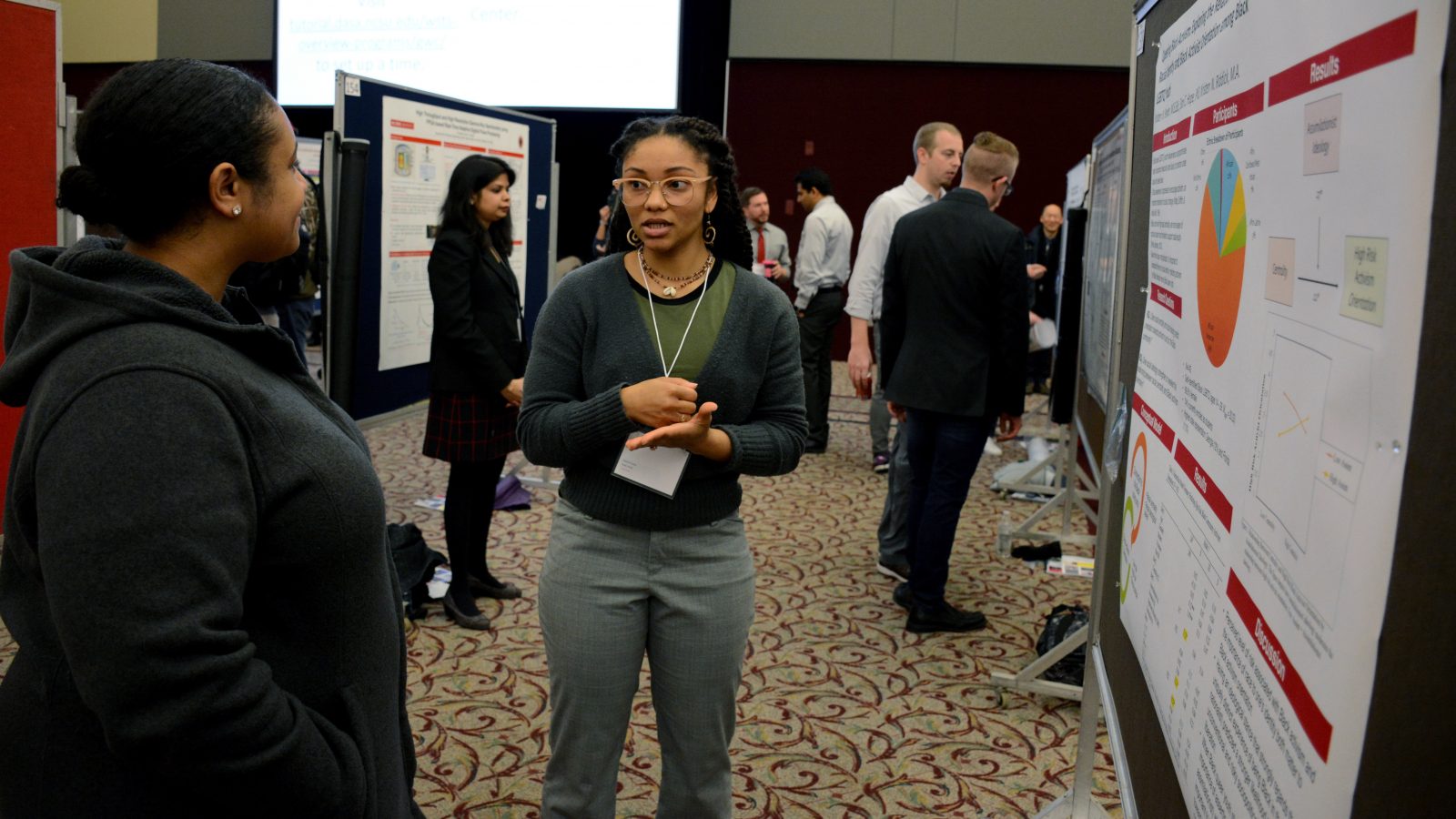Committed and Marginalized: How Race and Sexual Identity Impact Activism

What does activism mean to you? More specifically, how can we best understand the psychology of activism among Black people who also identify as LGBTQ?
NC State graduate student Kristen Pender’s research explores those questions. She studies how feelings and beliefs about race predict the types of activism in which Black LGBTQ youth are likely to engage.
Pender is an NC State doctoral student in psychology, in the applied social and community area. She presented her research at the 2018 NC State Graduate Student Research Symposium and took first place in the Social Sciences and Management category.

Q: How do you describe your research?
Most people define activism as a way to address a global issue. They also identify protests and marches as examples. It is important to consider that many people engage in activism surrounding a specific issue or within a specific community. My research in the Hope Lab looks at psychological predictors and consequences of activism within the Black community. In the Hope Lab, we also find that there are different types of Black activism: activism that is low in risk, risky unconventional activism and traditional political activism.
I titled my research project, “Queering Black Activism: Exploring the Relationship between Racial Identity and Black Activism Orientation Among Black LGBTQ Youth.”
Q: How did you get interested in this research?
I knew from the beginning of my first year in my program that I wanted to do something different for my second-year project. I said to myself, “If I’m going to ask a question, it might as well be a question that no one has either asked or answered yet.” At the time, there was very little research on the connection between Black racial identity and activism. It was even smaller when I narrowed my search to look specifically at the psychology of activism among individuals marginalized on the basis of race and sexual identity. The research I did find on my topic allowed me to learn about new concepts and theories that really got me thinking about what it means to have multiple marginalized identities and how this is connected with a young person’s engagement in social justice action. This project gave me an opportunity to explore an untapped area in my field and get hands on training in quantitative data analysis. I am proud to say that this was my very first quantitative research project, and it was a lot of fun!
Q: How did you conduct your research?
My data comes from a national study on Black youth called the Race and Politics Study. Eight hundred and ninety-three Black youth ages 14 to 29 from across the country were asked to complete a survey on their experiences with racial discrimination and political activism. Within this large sample, I analyzed data for 142 youth who identified as LGBTQ.
I used a statistical technique called hierarchical linear regression (HLR) to measure relationships between racial identity (independent variable) and future likelihood of engaging in Black activism (dependent variable). This technique tells us if an increase in racial identity is related to an increase or decrease in how likely you are to participate in activism. With this method, you can also account for other variables that might relate to activism, like gender or being a college student.
Activism provides a space for community members to voice their concerns and collaborate with people within and outside their communities for the greater good. However, activism is also associated with physical, mental, psychological and emotional risk.”
— Kristen Pender
Q: What did you find?
I found that perceived level of risk associated with Black activism and the importance of race to one’s identity both matter to the likelihood that a Black young person will engage in Black activism in the future. Black LGBTQ young people who strongly believed that being Black in the United States is a uniquely distinct experience were highly likely to pursue unconventional and risky activism to improve circumstances in the Black community.
I also found that when Black LGBTQ youth strongly believe in integrating within mainstream American society while also strongly feeling that race is an important part of their identity, they are more likely to engage in high-risk activism.
Q: Why does this research matter?
As demonstrated in the media, many young people of color put their lives on the line to effect change in their communities. Activism provides a space for community members to voice their concerns and collaborate with people within and outside of their communities for the greater good. However, activism is also associated with physical, mental, psychological and emotional risk. This perceived risk is important because it can leave lingering feelings of fear and insecurity especially among vulnerable populations such as racial minorities and youth. I believe it is important for psychologists to understand these psychological factors and potential consequences of activism and apply such insight to structure youth programs as spaces where youth can safely navigate such issues together.


